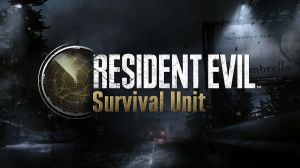Dungeons & Dragons‘ newest book continues a proud history of bringing campaign settings that originated from a creator’s home game to a larger audience. Earlier this week, Dungeons & Dragons released Explorer’s Guide to Wildemount, a new campaign setting book created in partnership with Critical Role. Created by Critical Role DM Matthew Mercer, Wildemount is a diverse and expansive continent dominated by two warring countries, the Dwendalian Empire and the Kryn Dynasty, with plenty of strange locations to explore and secrets to discover.
Videos by ComicBook.com
The vast majority of Dungeons & Dragons fans have reacted positively to Explorer’s Guide to Wildemount, even those who aren’t familiar with Critical Role. But there are some fans critical of the book for various reasons, including questioning its “legitimacy” as part of D&D canon, since the world originated as part of a home game. However, Wildemount has taken the same route to D&D canon as many other classic campaigns, including Greyhawk, the Forgotten Realms, and Mystara, in that they originated as a homebrew world that eventually received wider release via a Dungeons & Dragons campaign setting book.
While some of D&D’s campaign settings were made by game designers or a design team with a wide release in mind, many got their start as a “homebrew” setting that weren’t intended for public consumption. The world of Greyhawk started as Gary Gygax’s homebrew dungeon, a place for him to develop Dungeons & Dragons with his friends and family serving as players. Ed Greenwood came up with parts of the Forgotten Realms back in the 1960s long before D&D was released, and many of his early Dragon magazine articles contained throwaway mentions to what would eventually become D&D’s most iconic setting. And Mystara came from the home game of TSR employees Lawrence Schick and Tom Moldvay years before it became the home of Basic D&D adventures. Yes, Wizards of the Coast saw an economic opportunity by publishing Explorer’s Guide to Wildemount, but it’s no more of a “cash grab” than when Gary Gygax finally relented to publishing a campaign setting based on his own homebrew world after years of reluctance.
In many ways, Explorer’s Guide to Wildemount continues a long D&D tradition of transitioning “home campaigns” into worlds that all D&D fans can explore. After all, fans have shared their D&D adventures with others for decades, whether its through the pages of Dragon magazine, or novels and short stories, or zines, or early Internet messageboards. And while Critical Role is an Internet juggernaut now, it started as a fun way to share an ongoing D&D campaign with interested parties, with no expectation of the wild success it has enjoyed over the past five years.
I look at Explorer’s Guide to Wildemount as the modern successor of Greyhawk or many of those other early D&D worlds. It originated from a single D&D game, grew organically over time, and finally became canon after interested fans pushed for more information about it for years. It’s a modern D&D success story, and is a reflection of the creativity and care that goes into every D&D world – whether “official” or otherwise.









